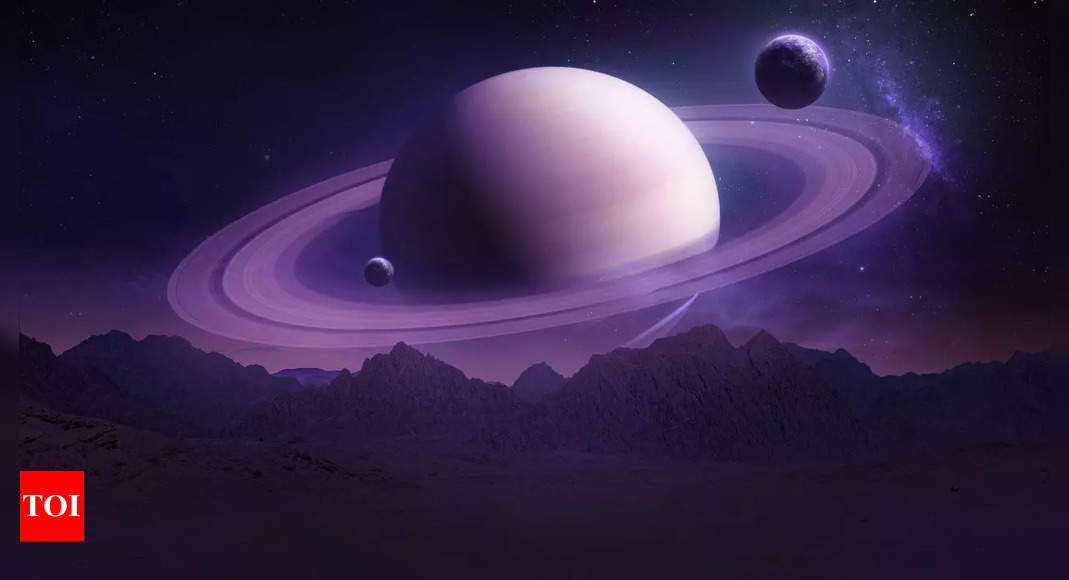Saturn, the most fascinating and mysterious planet of our planet, has many secrets yet to surprise scientists and astronomers. Although everyone knows its beautiful rings, the planet and its various characteristics are much more intricate and mysterious. Let us find out more of the secret Saturn facts from NASA studies. One of the most fascinating planets in our universe is still Saturn.
From its rings, with which everyone is well acquainted, to its multitude of moons, each of which possesses some unique property of its own, Saturn gives scientists endless chances to explore and learn. Explore the fascinating facts of Saturn.
Lesser-known facts about Saturn
Saturn’s position and size in the solar system
Saturn is the sixth planet from the Sun, following Jupiter and preceding Uranus. Saturn is also the second largest of the solar system planets following Jupiter. Saturn’s immense size sets it apart even in a solar system full of gas giants. To put it into perspective, Saturn’s diameter is roughly 120,500 kilometers, nearly nine times the Earth’s width. Its mere size makes Saturn one of the most beautiful planets to observe, and it dominates a series of solar system features, such as encircling the moon and ring orbits.
Saturn’s composition
Saturn, like its gaseous giant cousin Jupiter, consists of hydrogen and helium. They make up about 96% of Saturn’s atmosphere. They turn Saturn into a fluidic and gaseous composition planet, i.e., Saturn lacks the solid core of the Earth. Saturn consists of gas satellites and clouds above it to form a dynamic atmosphere. The upper atmosphere consists of ammonia, methane, and water vapor, and lower atmospheres consist of more complex molecules such as hydrogen sulfide.
Since Saturn does not have a solid surface, it’s also referred to as a \”giant ball of gas.” If one were to pass straight through its atmosphere, pressure and temperature would increase exponentially until the gases turn liquid state way below the planet.
Saturn rings
Saturn’s finest feature perhaps is its breathtaking ring system, the most delicate and sophisticated in the solar system. Saturn is not alone, however, in ring-bearing—Jupiter, Uranus, and Neptune all possess rings as well, with vastly less drama.
Saturn rings are made up of most icy particles and rocks and dust mixed. The icy particles vary in size from tiny grains to quite large pieces up to the size of a house. Saturn rings are made up of many main divisions, and each division is a different density. There are densely packed icy particles in some parts of the rings and not others.
The rings are between the planet and approximately 280,000 kilometers but merely 1 kilometer thick. The beautiful thing about the rings is that they are reflective, bouncing light from the sun in spectacular displays when viewed from Earth.
Dozens of moons with special features
Saturn’s moons provide yet another region of appeal to this already interesting planet. Saturn has 82 identified moons, the biggest one being Titan. Not only is Titan Saturn’s biggest moon, it’s also the second-largest in the solar system, being slightly smaller than Jupiter’s moon Ganymede. Titan is especially interesting because it has a thick atmosphere composed largely of nitrogen and some combination of methane and other organic chemicals, one of the solar system’s only dense-atmosphere sites.
Other than Titan, Saturn’s moons are radically different in size, composition, and geography. Consider Enceladus, for example, which is much smaller than the other Saturn moons but has a dense ice crust and explosive geysers that shoot water vapor and ice particles into space from under a secret pool of water on its bottom. This, scientists say, has left them wondering if at all Enceladus can be in any way capable of maintaining conditions to be supportive for microbial life. Each of Saturn’s moons offers another new insight into processes that created not just Saturn, but the solar system as a whole.
Unfriendly environment makes life unpossible on Saturn
The climate within Saturn itself is an incredibly remote location to discover life like ours. The interior of Saturn is hydrogen and helium rich with mere traces of oxygen. Saturn is also extremely cold, -178 degrees Celsius (-288 degrees Fahrenheit). Pressure becomes extremely fierce close to the center of the planet, giving a climate impossible for any life in our own form to survive. Saturn is also marked by tempestuous storms and stormy weather, whose wind velocities are more than 1,800 kilometers per hour (approximately 1,100 miles per hour). Such harsh environmental conditions would annihilate any possible life on the planet surface, if present.
The researchers also keep searching for life alternatives in environments surrounding the planet, i.e., on some moons of Saturn, which possess more bearable conditions.
Moons potentially capable of supporting life
Saturn isn’t habitable, but several of its moons are of some interest in that they might be capable of supporting life, at least in theory, with Enceladus and Titan being the ones of particular note.
Titan is of particular interest to scientists because it is the only known moon that has a substantial atmosphere. It also consists mostly of methane and nitrogen, and they can aid in the development of a prebiotic atmosphere like that present on early Earth. Titan also has huge liquid methane lakes apart from rivers on its surface, which gives earth like on the planet to a certain extent. There are even speculations of microbic life perhaps occurring in Titan’s methane lakes where methane replaces water to support life.
Enceladus, being a small moon, has garnered lots of attention with the water vapor and organic molecules coming out in geysers on its southern pole. The geysers are believed to be venting from an ocean of liquid below the icy surface of the moon. Liquid water, organic molecules, and energy sources impart high hopes for extraterrestrial life on other worlds beyond our own. The two moons are interesting worlds upon which to search for worlds that may be able to sustain life, possibly in forms beyond our imagination.
Saturn’s great size and mass
The size of Saturn is astounding. With a diameter of around 120,500 kilometers, Saturn is nearly nine times the size of Earth. Based on size alone, Saturn becomes a center of focus in scientific inquiry due to its enormity, yes, but due to its location at the very heart of solar system activity.
Saturn’s massive size creates a profoundly strong gravitational force, which has an effect on the orbits of nearby moons and even the make-up of its ring system. Its size also contributes to its mass being roughly 95 times that of Earth. Saturn, even though large, is actually less dense than Earth because its composition consists of lighter materials such as hydrogen and helium. In fact, the densest planet in the whole solar system is Saturn—if it were in some giant big ocean, Saturn would bounce right to the top!
Also Read | Watch | Fram2 astronaut shares breathtaking video of Bay of Bengal from space during Arctic journey
#surprising #Saturn #facts #NASA











